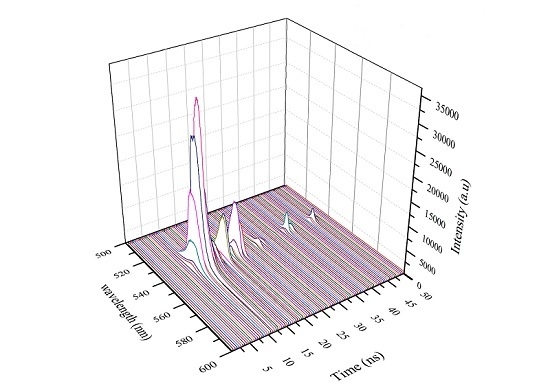Relaxation Oscillation with Picosecond Spikes in a Conjugated Polymer Laser
Abstract
:1. Introduction
2. Experimental
3. Result and Discussion
3.1. Spectral Properties
3.2. Temporal Features of Conjugated Polymer Laser
4. Conclusions
Acknowledgments
Author Contributions
Conflicts of Interest
References
- Shirakawa, H. The discovery of polyacetylene film: The dawning of an era of conducting polymers (Nobel lecture). Angew. Chem. Int. Ed. 2001, 40, 2574–2580. [Google Scholar] [CrossRef]
- Ohmura, K.; Kijima, M.; Shirakawa, H. Synthesis of conducting polymers with conjugated carbon-carbon triple bonds by electrochemical condensation of acetylene derivatives catalyzed by copper complex. Synth. Metals 1997, 84, 417–418. [Google Scholar] [CrossRef]
- Chiang, C.K.; Fincher, C.R., Jr.; Park, Y.W.; Heeger, A.J.; Shirakawa, H.; Louis, E.J.; Gau, S.C.; MacDiarmid, A.G. Electrical conductivity in doped polyacetylene. Phys. Rev. Lett. 1977, 39, 1098. [Google Scholar] [CrossRef]
- Weinberger, B.R.; Akhtar, M.; Gau, S.C. Polyacetylene photovoltaic devices. Synth. Metals 1982, 4, 187–197. [Google Scholar] [CrossRef]
- Soci, C.; Hwang, I.W.; Moses, D.; Zhu, Z.; Waller, D.; Gaudiana, R.; Brabec, C.J.; Heeger, A.J. Photoconductivity of a low-bandgap conjugated polymer. Adv. Funct. Mater. 2007, 17, 632–636. [Google Scholar] [CrossRef]
- Shaheen, S.E.; Radspinner, R.; Peyghambarian, N.; Jabbour, G.E. Fabrication of bulk heterojunction plastic solar cells by screen printing. Appl. Phys. Lett. 2001, 79, 2996–2998. [Google Scholar] [CrossRef]
- Ng, K.K.; Zheng, G. Molecular interactions in organic nanoparticles for phototheranostic applications. Chem. Rev. 2015, 115, 11012–11042. [Google Scholar] [CrossRef] [PubMed]
- Snedden, E.W. Experimental investigations of excited-state dynamics in conjugated polymers using time-resolved laser spectroscopy. Ph.D. Thesis, Durham University, Durham, UK, 2011. [Google Scholar]
- Masilamani, V.; Ibnaouf, K.H.; Alsalhi, M.S.; Yassin, O.A. Laser properties of a conjugate polymer (MEH-PPV) in the liquid-excimeric state. Laser Phys. 2007, 17, 1367–1373. [Google Scholar] [CrossRef]
- Ibnaouf, K.H.; Prasad, S.; Masilamani, V.; Alsalhi, M.S. Evidence for amplified spontaneous emission from double excimer of conjugated polymer (PDHF) in a liquid solution. Polymer 2013, 54, 2401–2405. [Google Scholar] [CrossRef]
- Ibnaouf, K.H.; Prasad, S.; Masilamani, V.; Alsalhi, M.S.; Alaamer, A.S. Evidence for the Double Excimer State of conjugated polymer in a liquid solution. J. Eur. Opt. Soc. 2013, 8, 13001–13005. [Google Scholar] [CrossRef]
- Prasad, S.; Ibnaouf, K.H.; AlSalhi, M.S.; Masilamania, V. Laser from the dimer state of a conjugated polymer (PFO) in solution. Polymer 2014, 55, 727–732. [Google Scholar] [CrossRef]
- Miyazoe, Y.; Maeda, M. On the spiking phenomenon in organic dye lasers. IEEE J. Quantum Electron. 1971, 7, 36–37. [Google Scholar] [CrossRef]
- Soukoulis, C.M.; Jiang, X.; Xu, J.Y.; Cao, H. Dynamic response and relaxation oscillations in random lasers. Phys. Rev. B 2002, 65, 041103. [Google Scholar] [CrossRef]
- Van der Molen, K.L.; Mosk, A.P.; Lagendijk, A. Relaxation oscillations in long-pulsed random lasers. Phys. Rev. A 2009, 80, 055803. [Google Scholar] [CrossRef]
- Metzger, W.K.; Ahrenkiel, R.K.; Dippo, P.; Geisz, J.; Wanlass, M.W.; Kurtz, S. Time-resolved photoluminescence and photovoltaics. In Proceedings of the Department of Energy Solar Energy Technologies Program Review Meeting, Denver, CO, USA, 25–28 October 2004.
- Lin, C.; Shank, C.V. Subnanosecond tunable dye laser pulse generation by controlled resonator transients. Appl. Phys. Lett. 1975, 26, 389–391. [Google Scholar] [CrossRef]
- Salzmann, H.; Strohwald, H. Single picosecond dye laser pulses by resonator transients. Phys. Lett. A 1976, 57, 41–42. [Google Scholar] [CrossRef]
- Yang, J.; Diemeer, M.B.J.; Grivas, C.; Sengo, G.; Driessen, A.; Pollnau, M. Steady-state lasing in a solid polymer. Laser Phys. Lett. 2010, 7, 650. [Google Scholar] [CrossRef]
- Dykstra, T.E.; Hennebicq, E.; Beljonne, D.; Gierschner, J.; Claudio, G.; Bittner, E.R.; Knoester, J.; Scholes, G.D. Conformational disorder and ultrafast exciton relaxation in PPV-family conjugated polymers. J. Phys. Chem. B 2008, 113, 656–667. [Google Scholar] [CrossRef] [PubMed]
- Banerji, N.; Cowan, S.; Vauthey, E.; Heeger, A.J. Ultrafast relaxation of the poly(3-hexylthiophene) emission spectrum. J. Phys. Chem. C 2011, 115, 9726–9739. [Google Scholar] [CrossRef]
- Williams, A.T.R.; Winfield, S.A.; Miller, J.N. Relative fluorescence quantum yields using a computer-controlled luminescence, spectrometer. Analyst 1983, 108, 1067–1071. [Google Scholar] [CrossRef]
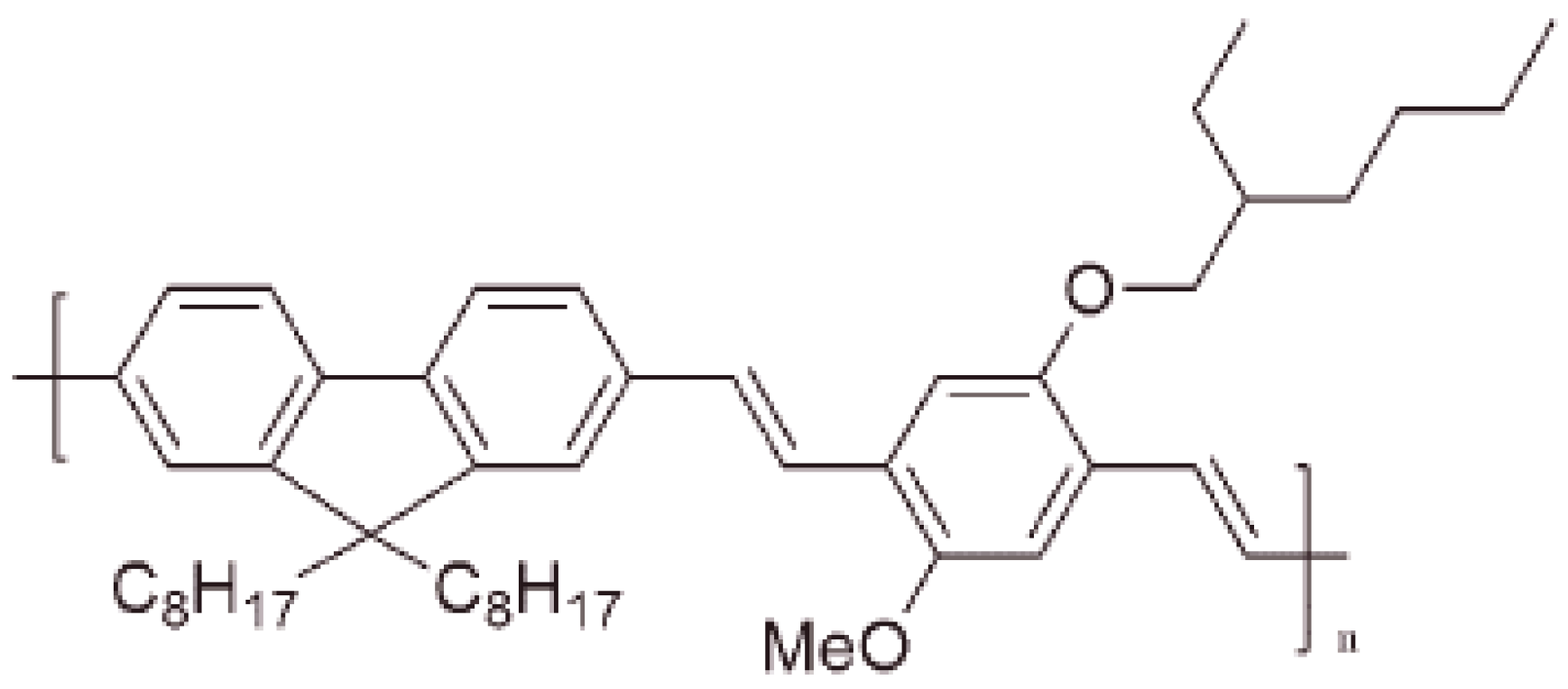
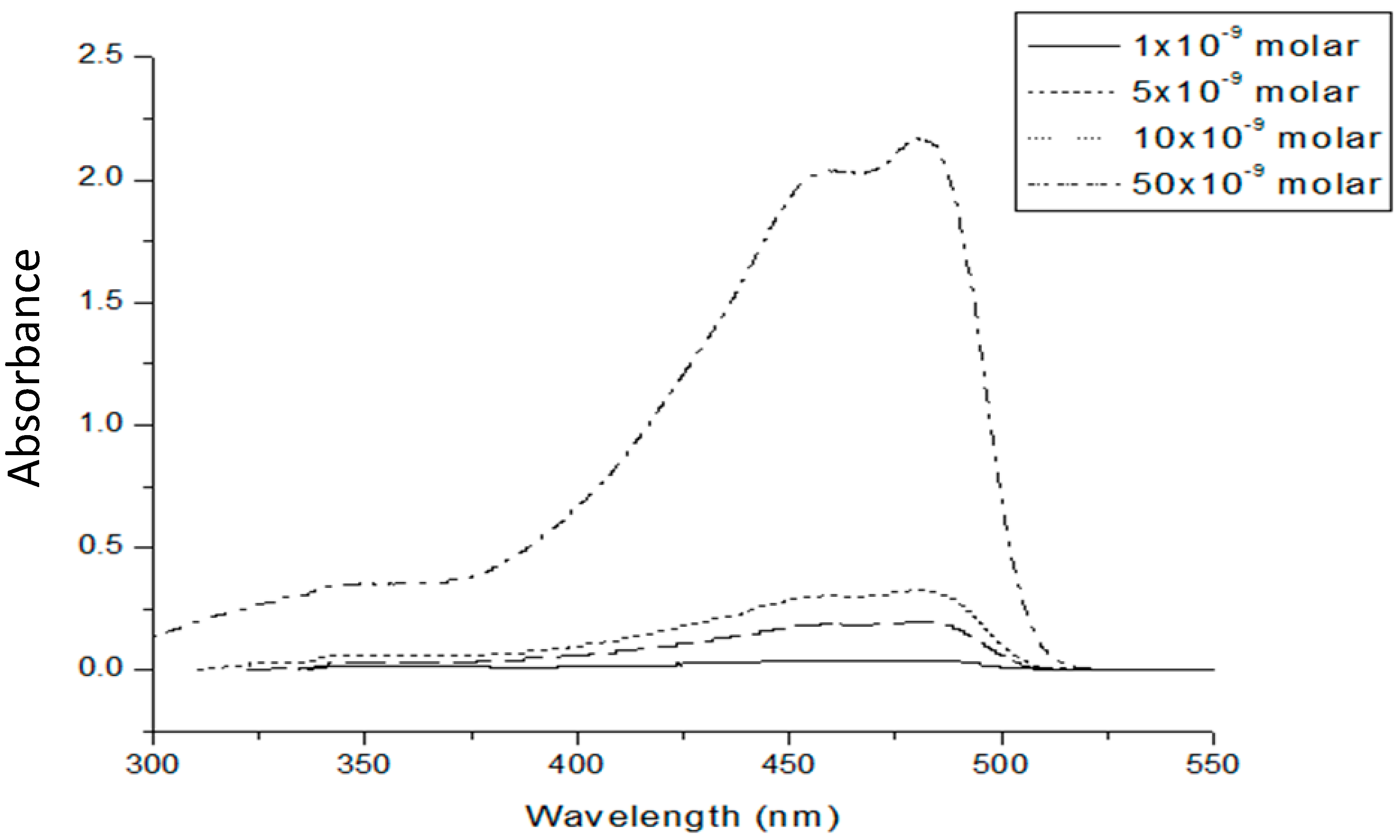
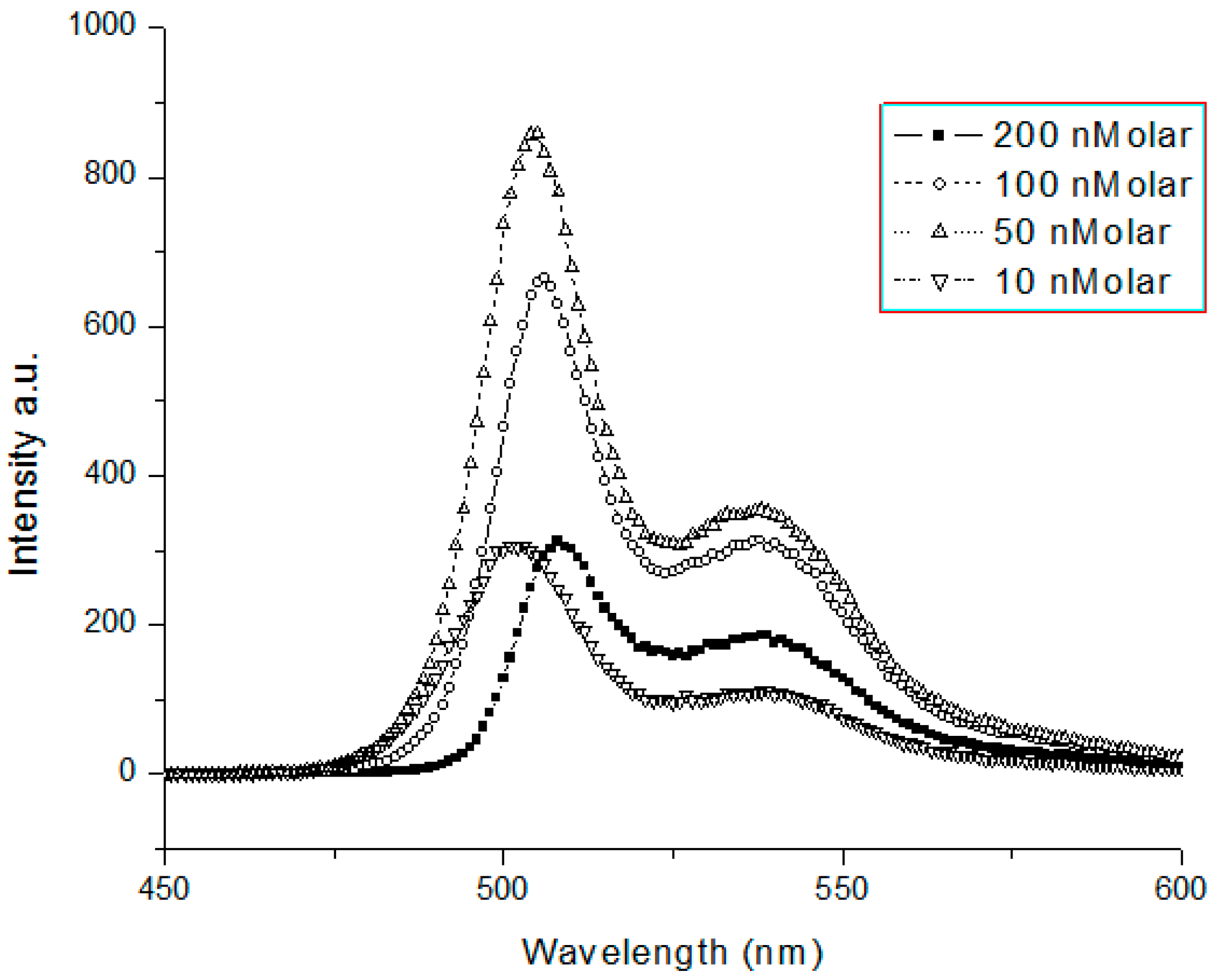
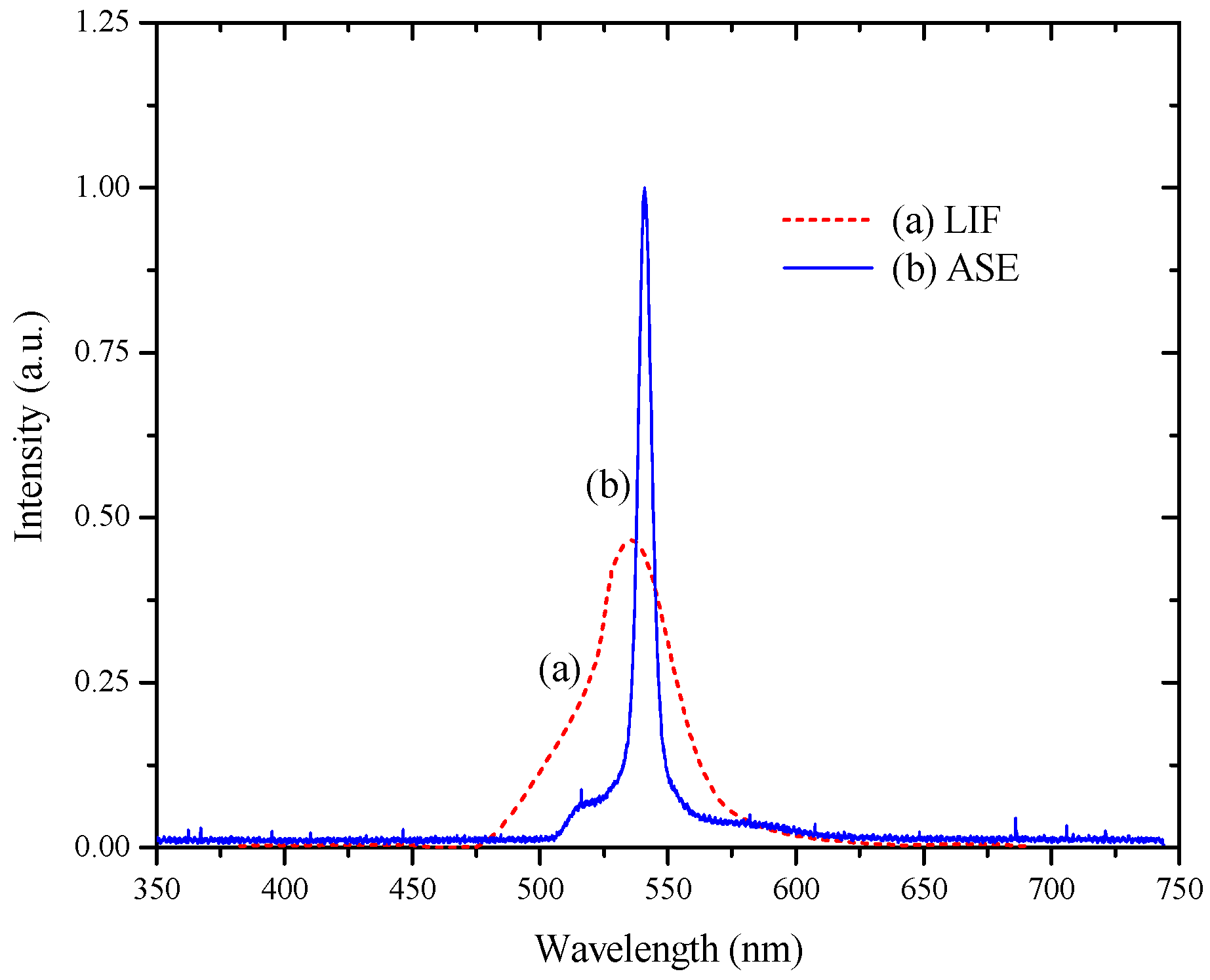
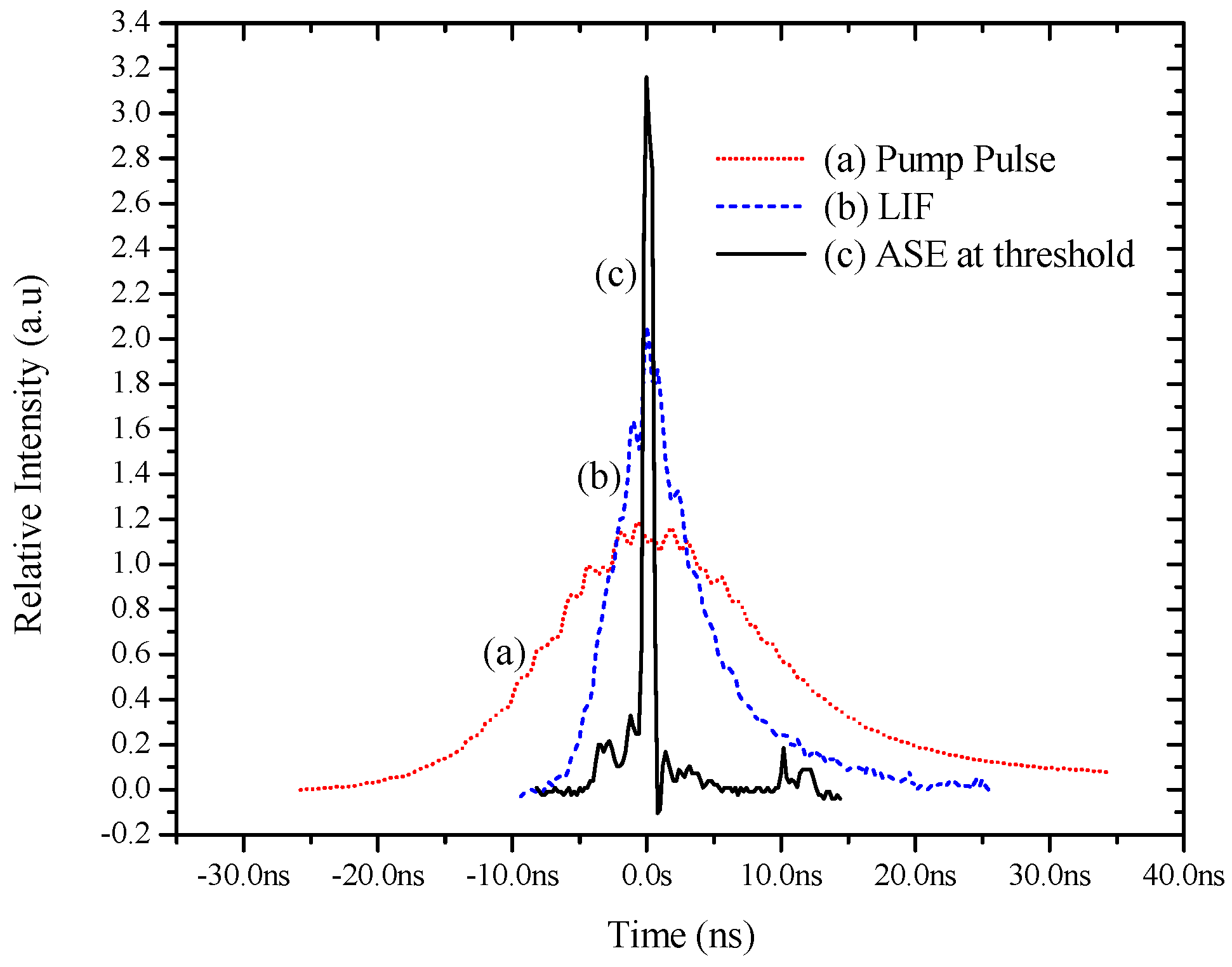

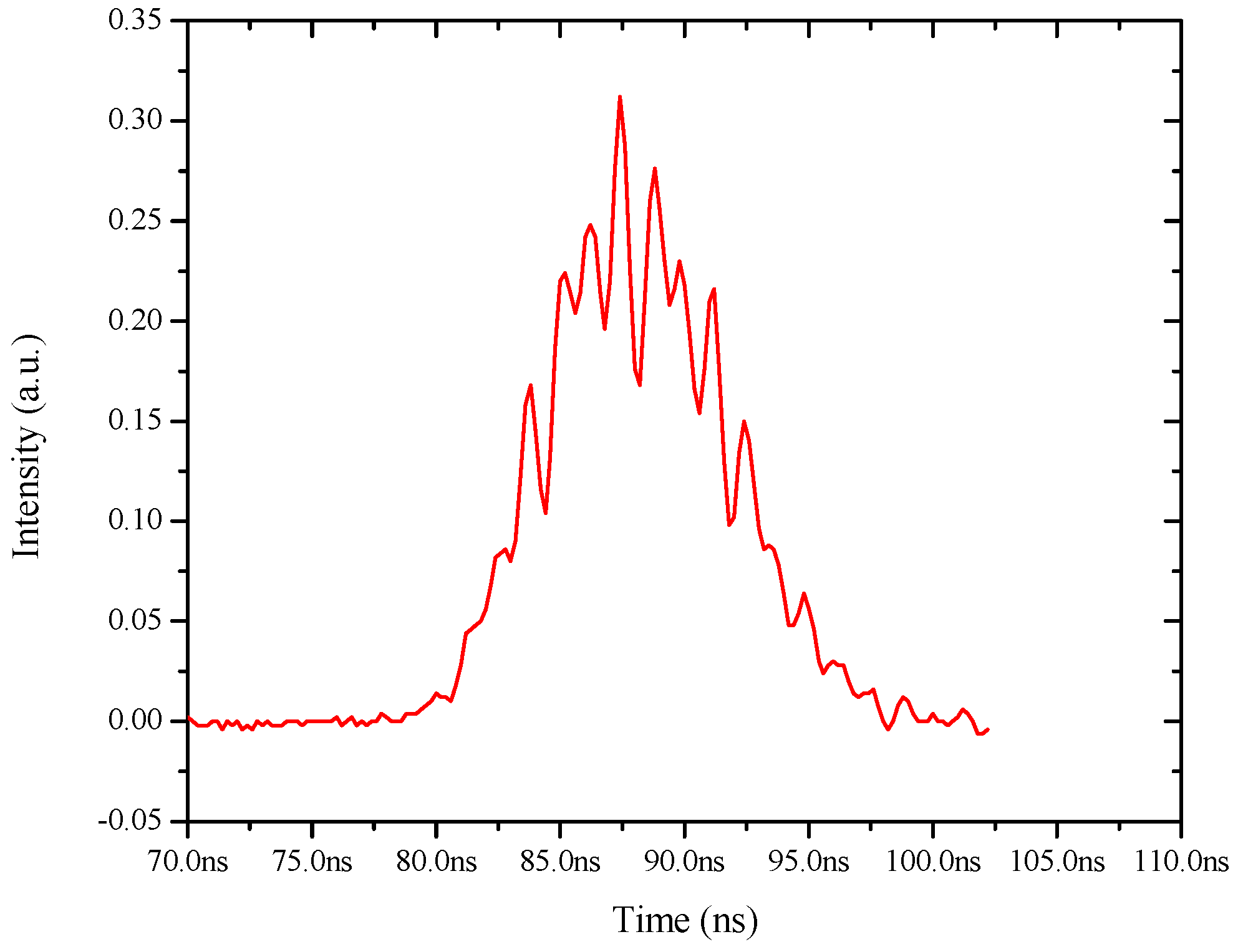
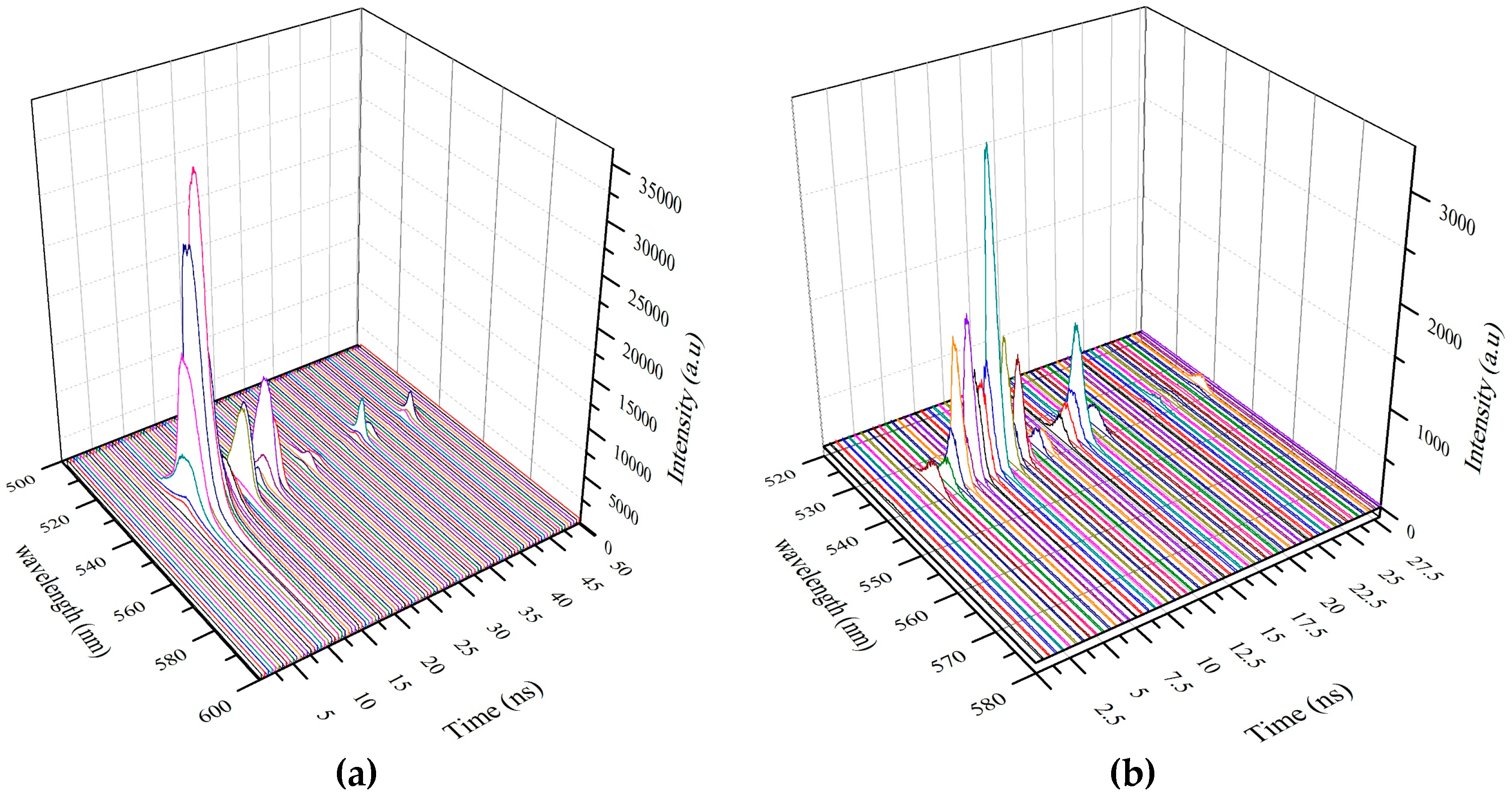
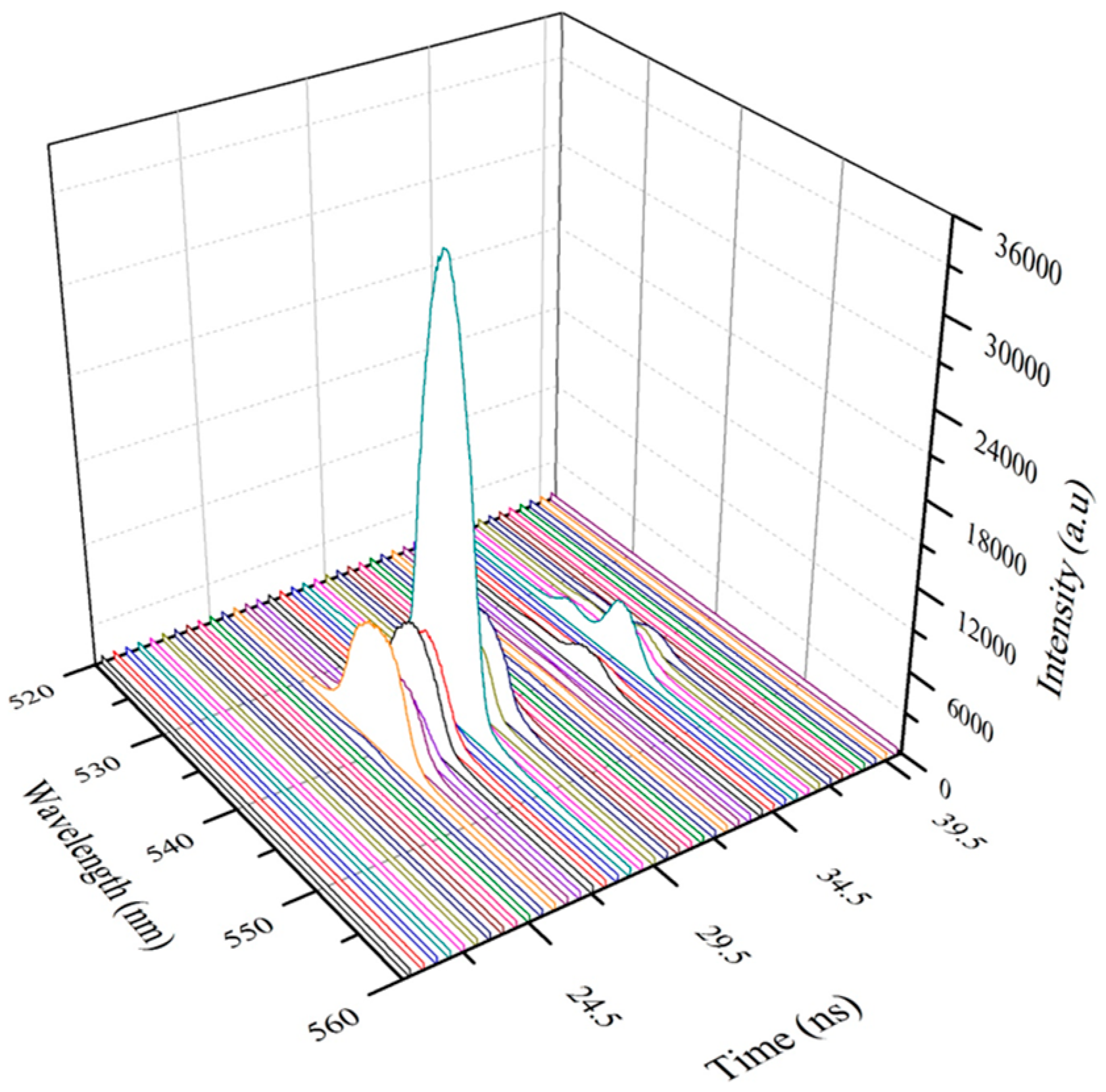
| Solvent | Optical Density (a.u) | Absorption Peak (nm) | Emission Peak (nm) | Stokes Shift (cm−1) | Quantum Yield |
|---|---|---|---|---|---|
| Benzene | 1.07 | 481 | 505 | 988 | 0.75 |
| Chloroform | 1.57 | 480 | 507 | 1066 | 0.47 |
| Toluene | 1.48 | 481 | 505 | 988 | 0.49 |
| THF | 1.91 | 481 | 505 | 988 | 0.38 |
| Dichlorobenzene | 1.28 | 488 | 513 | 998 | 0.78 |
© 2016 by the authors. Licensee MDPI, Basel, Switzerland. This article is an open access article distributed under the terms and conditions of the Creative Commons Attribution (CC-BY) license ( http://creativecommons.org/licenses/by/4.0/).
Share and Cite
Mujamammi, W.M.; Prasad, S.; AlSalhi, M.S.; Masilamani, V. Relaxation Oscillation with Picosecond Spikes in a Conjugated Polymer Laser. Polymers 2016, 8, 364. https://doi.org/10.3390/polym8100364
Mujamammi WM, Prasad S, AlSalhi MS, Masilamani V. Relaxation Oscillation with Picosecond Spikes in a Conjugated Polymer Laser. Polymers. 2016; 8(10):364. https://doi.org/10.3390/polym8100364
Chicago/Turabian StyleMujamammi, Wafa Musa, Saradh Prasad, Mohamad S. AlSalhi, and Vadivel Masilamani. 2016. "Relaxation Oscillation with Picosecond Spikes in a Conjugated Polymer Laser" Polymers 8, no. 10: 364. https://doi.org/10.3390/polym8100364





